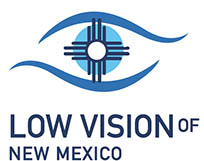 Every year, more than half a million children suffer from low vision or blindness in North America. Having impaired vision makes it difficult to read, play sports, participate in social events, and recognize faces. Low vision can also make it difficult to navigate outdoors, especially on crowded sidewalks and busy streets.
Every year, more than half a million children suffer from low vision or blindness in North America. Having impaired vision makes it difficult to read, play sports, participate in social events, and recognize faces. Low vision can also make it difficult to navigate outdoors, especially on crowded sidewalks and busy streets.
Often, the first signs of low vision can manifest as a child appearing clumsy or inattentive, when the true problem lies in their vision.
We understand how impaired vision can adversely impact a child’s life, and we're here to help. Our low vision doctors offer a variety of helpful strategies vision aids that can help maximize your child's remaining vision, thus ensuring the highest quality of life under the circumstances.
Read on to learn about some common causes of low vision and blindness in children and discover how a low vision optometrist can help children with impaired vision live their best lives.
Leading Causes of Pediatric Low Vision and Blindness
Albinism
Albinism is an inherited condition that affects melanin production. Melanin is the pigment in the skin, hair, and eyes that gives each person their own unique coloring. Some people with albinism have very little melanin, while others have no melanin at all.
Aside from making a person look different on the outside, albinism can also affect how the eyes function. Healthy amounts of melanin are used in the development of the retina (light sensitive lining at the back of the eye). Reduced amounts of melanin in the eyes, or none at all, can cause a range of vision problems including:
- Poor eyesight — nearsightedness or farsightedness
- Low vision — irreversible vision loss
- Astigmatism — where the clear part at the front of the eye (cornea) isn't curved correctly or the lens is abnormally shaped, causing blurred vision
- Photophobia — light sensitivity
- Nystagmus — involuntary, rapid eye movements
- Squint — eyes pointing in different directions
Vision problems associated with albinism last a lifetime, but typically don't worsen over time.
Pediatric Cataracts
A cataract is the opacity or cloudiness that occurs in the eye’s lens, which is crystal clear in a healthy eye. Some cataracts are small and won’t interfere with vision, while others are large and can cause severe vision loss.
An estimated 3 out of 10,000 children have cataracts. Common causes of pediatric cataracts are genetics, infections, and abnormal lens development in utero. Not all cataracts interfere with vision, as some are small or on the outer edges of the lens. If a cataract interferes with the child’s vision, it should be surgically removed as soon as safely possible.
Pediatric Glaucoma
Pediatric glaucoma (also referred to as childhood or infantile glaucoma) is generally diagnosed before a child’s first birthday. Glaucoma causes an increase in the eye’s internal pressure, which can lead to permanent optic nerve damage. Aside from vision loss, symptoms of pediatric glaucoma include enlarged eyes, photosensitivity (light-sensitivity), excessive tearing, and cloudiness in the cornea. In many cases, childhood glaucoma can be effectively managed and treated.
Retinal Diseases
Certain retinal diseases, like Stargardt macular dystrophy, retinitis pigmentosa (RP), Usher syndrome, Leber congenital amaurosis, and Bardet-Biedl syndrome can cause low vision or blindness in children. Children with these retinal diseases should be closely monitored by a low vision optometrist as the condition progresses.
Ocular Trauma
Ocular trauma is a leading cause of acquired monocular blindness (blindness affecting one eye) among children. According to a study published in The Journal of Ophthalmology, about a quarter of a million children are treated for serious ocular trauma yearly in the USA alone. Up to 14% of those cases resulted in visual impairment or blindness. Whenever possible, ensure that your child is wearing protective eyewear when doing certain crafts, playing sports, or engaging in any activity that could pose a risk to their eyes.
How a Low Vision Optometrist Can Help
Many children with vision loss can live full and independent lives. While we may not be able to restore lost vision, we do offer several low vision aids and devices that can help maximize a child’s usable vision. This will enable the child to make the most of their sight, continue to function as independently as possible, and not miss out on the joys of being a kid.
If you have a child with low vision, contact Low Vision of New Mexico today. We can help.
Low Vision of New Mexico serves patients from Albuquerque, Santa Fe, Las Cruces, and Los Alamos, throughout New Mexico.
REFERENCES
- https://aapos.org/glossary/low-vision#:~:text=What%20are%20some%20of%20the,retinal%20and%20optic%20nerve%20abnormalities.
- https://www.researchgate.net/publication/49847509_Causes_of_visual_impairment_in_children_with_low_vision
- https://www.nhs.uk/conditions/albinism/
